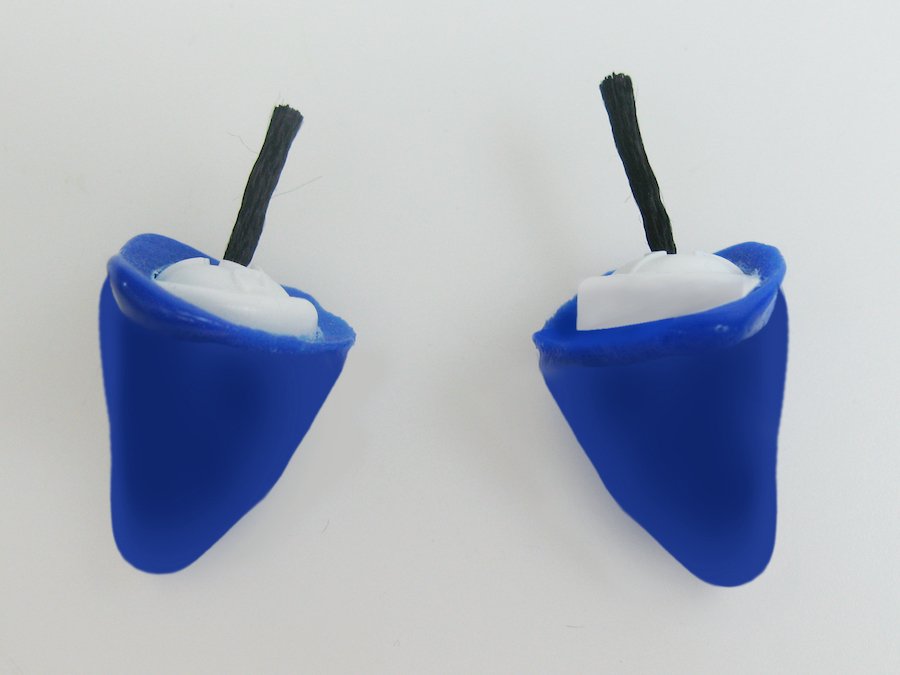We try to surf as much as possible, and as far as we knew, there was no such thing as surfing too much. Apparently though, surfing too often can be a problem… especially when it comes to the health of your ears.
The vibes at Southwest Surf House are epic one day, awesome the next. Sometimes though, we need to get a little bit real. And there’s nothing more real than the risk of missing out on pumping waves because of surfer’s ear.
Generally regarded as the scourge of wave hunters everywhere, surfer’s ear is a condition whereby your ear canal becomes blocked, which prevents water from draining and causes an increased risk of ear infection.
Surfer’s ear affects about 38% of the general population, but for surfers the prevalence is much higher, with about 26% to 73% of surfers experiencing surfer’s ear to one degree or another. As for professional surfers, well, they’re obviously more at risk; a recent article from Australia noted that 89% of professional surfers from the Land Down Under complained of surfer’s ear symptoms.
In short, surfer’s ear sucks worse than a north Atlantic flat spell, so in the interest of public health, we thought we’d talk a little bit about surfer’s ear, surfer’s ear symptoms and how best to prevent it in the following article.
What is surfer’s ear?
As we just mentioned, surfer’s ear results from the bone of the ear canal developing a sort of growth. This bony growth is called exostoses. Over time it can lead to the partial or full blockage of the ear canal… and less time ruling the evening sessions with your mates.
What causes it?
The condition of surfer’s ear and its related symptoms are usually caused by prolonged exposure to cold wind, cold water or a combination of both.
According to this article, those who regularly surf in cold conditions are 6 times more likely to develop surfer’s ear than warm water surfers (which, if anything, is added incentive to book a trip to France during the summer months). But it’s not only humans that have to deal with the consequences of surfer’s ear.
Waterborne mammals such as seals develop exostoses too. The only difference between us and our four-flippered friends of the ocean though is that exostoses in seals is a physiological adaptation and not a response to extreme cold. It actually helps protect them by shielding their sensitive hearing organs when they dive so that it’s not flooded.
Surfer’s ear: myth vs. reality
There are a few myths about surfer’s ear floating around beach carparks and online surf magazine forums. One of the main ones is that surfer’s ear and swimmer’s ear are exactly the same thing.
This isn’t the case. Surfer’s ear is caused by bone growth over the ear canal that’s exacerbated by regular exposure to cold or freezing conditions. Swimmer’s ear, on the other hand, is an infection caused by water that stays in your ear, thereby giving bacteria a moist environment to thrive in.
Another misconception about surfer’s ear is that it can be treated by medication. This is also false. Surfer’s ear in its advanced stages will most definitely require surgery. What’s more, surgery isn’t a permanent solution – you still need to look after your ears once you get back in the water post-op.
Surfer’s ear symptoms
The reason why ear infections take hold is that water and debris can be trapped behind the bone grown within the ear canal.
In the most extreme cases, this can lead to a painful blockage. When this occurs, you should seek medical treatment from your local doctor or an ear, nose and throat specialist. Some telltale signs that you might have surfer’s ear include:
· Decreased hearing or partial hearing loss
· Difficulty evacuating debris or water from the ear
· A plugging sensation in your ear
· Reoccurring ear infections that cause pain
· Pain when applying pressure to your ear
Of course, like all people you might decide that your surfer’s ear symptoms are not so bad and therefore not worth a trip to the doc. Based on our experience, recurring infections are no joke. The last thing you want is to sit out longer than you must due to a serious case of surfer’s ear that could’ve been mitigated.
Diagnosing and treating surfer’s ear
While the symptoms of surfer’s or exostosis ear might be obvious, there’s only one way to truly diagnose the problem – get yourself to the doctor.
Only a trained medical professional can diagnose surfer’s ear properly. If it’s deemed to be only minor, then you can skip the treatment. If your exostosis ear grows though, medical intervention will be necessary.
Now, there’s nothing fun about the treatment of surfer’s ear. The only two options available require surgery. The good news is that both options are relatively quick, as is the actual recovery time.
Ear drops and basic pain relievers are all that’s needed in order to bring you back to life. You may also be prescribed an antibiotic to prevent infection post-surgery. The bad news is that even after you’ve recovered, you still need to stay out of the water for anywhere from 4-6 weeks after the operation.
As any surfer will know, 4-6 weeks with zero chance to surf is a serious mood affecter. What’s more, surgery for exostosis ear is no guarantee that you won’t develop a new growth sometime in the future.
Tips for preventing surfer’s ear
So, it may sound like we’ve been the bearers of bad news up until this point… but hang in there. You can 100% avoid ever developing surfer’s ear.
All you need to do is get serious about looking after your ears when you’re surfing. This can be done one of two ways. The first is by avoiding the very thing that contributes to exostosis ear – cold water conditions. The second is to cover your ears one way or another (earplugs, swimming caps, hoods) when you’re surfing.
Now, the first preventative method is off the table for most of us, because let’s be honest – if you’re given the choice of surfing good French beachbreaks even though it comes with the risk of surfer’s ear OR not surfing at all, you’re going to opt for the first one every day of the week.
As for the second one, well, that’s a little bit more sensible.
Either way, you still want to do something in order to avoid going through surgery. As you probably guessed, it’s not a pleasant experience. The drilling, the chiselling, the fact that you can’t surf for ages afterwards. No thank you, monsieur doctor.
This means that earplugs are the way to go.
Surfer’s ear and surfing in France
Of course, surfer’s ear is only a problem if you’re constantly exposing yourself to cold water and wind. This more or less rules out all of you who only surf for one or maybe two weeks of the year in the warmer months.
Translation? You don’t need to lie awake at night thinking about surfer’s ear when booking with Southwest Surfhouse. You’re more likely to slip on a buttery croissant or develop a severe case of sand rash.
That being said, there are those of you who’ll probably come back to France to surf again. And you might even decide to return when the water temperatures have dropped. If that sounds like you, then remember that prevention is better than the cure.
Earplugs are a big help when it comes to thwarting exostosis ear. As is using over the counter ear drops, such as those containing isopropyl alcohol and glycerine, in order to dry your ear out and prevent infections.
The 9 best earplugs for combatting surfer’s ear symptoms
What are the best earplugs for surfing?
This question would never have been asked a decade ago. Now, with modern earplugs, the increase in people taking up surfing and advancements in neoprene technology that allow us to surf in colder conditions, surfer’s ear symptoms are being taken more seriously.
The best way to protect yourself from exostosis ear is to wear earplugs. With so many available options on the market though, it might be difficult to know which brands are best. Here’s what you should look for when buying earplugs:
· How effective are they?
· Do they stay in my ears?
· Are they comfortable to wear?
· Can I still hear?
· Are they adjustable?
· Do they come with a case?
As for the leading earplug brands, there are 9 to choose from. Each have their own strengths and weaknesses. For added help when it comes to buying earplugs for your next trip to Southwest Surf House, we’ve also included a link to the earplug’s company page.
1. SurfEars 3.0 – The best surfer’s earplug on the market. Endorsed by leading surf professionals and everyday shredders
2. Mack’s AquaBlock – Good if you have nothing else on you to use. Not great if you’re looking for a long-lasting solution
3. Mack’s Moldable Silicone Putty Earplugs – A step up from bluetack. They block everything (water, air, sound) from entering your ear
4. JBL Hydro Seals – Relatively cheap with a decent design. The fact they come without a leash is a bit sketchy
5. Oken Swimming Earplugs – Stylish and simple but they block out all sound
6. Gooq Premium Surf Plugs – The Amazon alternative to SurfEars. They work, but their in-ear fit leaves a lot to be desired
7. Doc’s ProPlugs – Quality earplugs designed by a doctor. They fit and drain well. Carrying case is sub-par
8. Naohiro Swimming Earplugs – Easy to use and affordable. However, they’re not suited to every ear shape
9. Hearprotek Upgraded Custom-fit – Comparably expensive but effective. They’re customised to your ears although they can feel bulky






